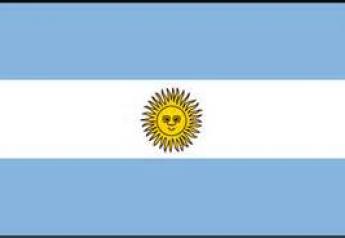Who Produces What? Key Agriculture Stats from Around the Globe

Agriculture is a global and diverse industry. In the last two decades, the production of crops worldwide increased by over 53%, reaching a record high of 9.8 billion tons in 2020, according to the Food and Agriculture Organization of the United Nations.
In addition, agriculture is an essential factor in economic growth, accounting for 4.3% of the global GDP.

What are the most popular crops and livestock produced across the globe? Which crops are grown where? A recent report from the University of the Potomac, Where Does Our Food Come From, highlights some of the latest data on agricultural production.
Let’s take a journey around the world of agriculture:
The most widely cultivated agricultural commodities worldwide are:
- Cow milk
- Sugar cane
- Corn
- Wheat
- Rice
- Potatoes
Key Production Stats
Cow milk is the top agricultural product in 37 countries, while wheat is the top agricultural product in 14 countries.
Corn is the most produced crop globally with 1.1 billion tons, followed by wheat with 760.9 million tons and rice with 756.7 million tons.
Largest Producer by Commodity
- Apples: China
- Bananas: India
- Barley: Russia
- Beef: U.S.
- Chicken: U.S.
- Corn: U.S.
- Cow Milk: U.S.
- Eggs: China
- Green Beans: China
- Oats: Canada
- Pork: China
- Potatoes: China
- Rice: China
- Sugar Beets: Russia
- Sugar Cane: Brazil
- Tomatoes: China
- Wheat: China

In the past two decades:
- The production capacities of Asia almost doubled from 3.3 billion tons to 5.1 billion tons, and In 2020, half of the global agricultural production came from Asia.
- South America’s crop production surged twofold, from 748.4 million tons in 2000 to 1.4 billion tons in 2020.
Country Production Highlights
China: With less than 10% of the world’s arable land, China produces 25% of the world’s grain. In 2020, China was the lead producer of over 30 crops, including wheat, rice, tomatoes, and potatoes.
U.S.: In 2020 the US agricultural production accounted for $134.7 billion, about 0.6% of its national GDP. In 2020, the U.S. was the world’s largest producer of corn (360.2 million tons), harvesting about one-third of global production. It also produces over half of the global almond output and over one-third of global blueberry production.
Brazil: In 2020, its agricultural production value reached $85 billion, a 30% increase from 2019. The country is expanding its agricultural land, which in 2020 was about one-third of Brazil’s total area — a 22% increase from nine years ago. In 2020, Brazil produced one-third of the world’s production of soybeans (121.7 million tons), coffees (3.7 million tons), and oranges (16.7 million tons).
Russia: Russia’s agricultural production value increased from $10 billion in 2000 to $85.5 billion in 2020. Today, Russia is the world’s largest producer of barley and sugar beets accounting for 13% and 14% of the world’s total production, respectively. Russia also cultivates over a third of global sunflower seeds production and one-sixth of oats output.
India: In 2016, the agriculture sector accounted for 23% of the country’s GDP, and 59% of the workforce made a living from agriculture. Around 70% of the rural population depends mainly on agriculture. In 2020, India produced half of the world’s mango production (24.7 million tons) and 20% of global wheat production (107.5 million tons). A quarter of the global output of rice (178.3 million tons), sugar cane (370,5 million tons), and bananas (31.5 million tons) came from India.
Leading countries in the global export of commodities
- U.S.
- Netherlands
- Brazil
- China
- Germany
To see more of the newest data on agricultural production, check out the “Where Does Our Food Come From” report from the University of the Potomac.







